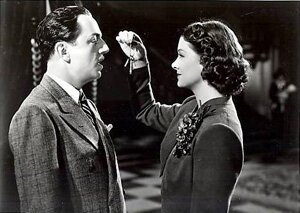The series of Thin Man movies answers the question, “What does happily ever after look like?”

Romances are usually about the obstacles a couple goes through in order to be together and they end with the pair finally uniting with the implication they will now be happy. United, they will live “happily ever after.”
William Powell and Myrna Loy as Nick and Nora Charles in the Thin Man movies show us the couple united and what life is like now that they are.
Together and happy, life is comedy. The movies aren’t romances; that part of their story has played out. (We never are shown this. The movies start after that has happened.)
The appeal of Nick and Nora is that they are united – they’re married – and they are living that happy life implied by the endings of romances. This is something audiences rarely see, certainly not seen so well articulated and charming.
The murder mystery element of the movies is key but only as an engine to allow their happy life to play out. It provides an engine to move the story forward and to provide a context within which we can see Nick and Nora behave as a happy couple.
The movies work individually but when seen as a series and in the order in which they came out they also show us their happy life evolve over time. And the way it evolves is telling. Specifics change. They look a bit older; they have a baby; the baby becomes a child … and so on.
But their relationship and what characterizes it doesn’t change. The essence of Nick and Nora as a couple remains the same.
The comedy is a mix of three elements, the ratios of which alter to varying degrees from film to film. It combines wit, slapstick and screwball/farce. The wit dominates throughout, though the other two elements are stronger in the later films.
The significance of the wit (apart from being fun to hear and see so well executed) is that it gives us Nick and Nora as equals, even in the later films when Loy’s Nora starts being presented as more of a sidekick to Nick than a partner.
The slapstick and farce elements, apart from providing some variation in the humour, allows the movies to keep the pair in check, especially Nick. He has to be clever but, whenever he starts to appear a little too clever and maybe not “a regular guy,” it’s slapstick that steps in to put him back in place (and in some cases, keep Nora in place).
Over a period of 13 years, William Powell and Myrna Loy had a wonderful run with their series of Thin Man movies. In all, there were six.
Although “the thin man” in the original movie, and the Dashiell Hammett novel that was the springboard for the movies, referred to a mysterious character, Clyde Wynant, (who doesn’t even appear in the original novel as I recall), in the movies “the thin man” came to refer to Nick Charles, William Powell’s character.
As movie series go, The Thin Man proved to be one of the most successful ever. And the team of William Powell and Myrna Loy worked so well that not only did they make six movies as Nick and Nora Charles, they made eight others together for a total of fourteen movies. But it is as the Charles’s in these Thin Man movies, where they are living the “happily ever after” life, that they are known best and most fondly for.
- The Thin Man (1934)
- After the Thin Man (1936)
- Another Thin Man (1939)
- Shadow of the Thin Man (1941)
- The Thin Man Goes Home (1945)
- Song of the Thin Man (1947)



4 Responses